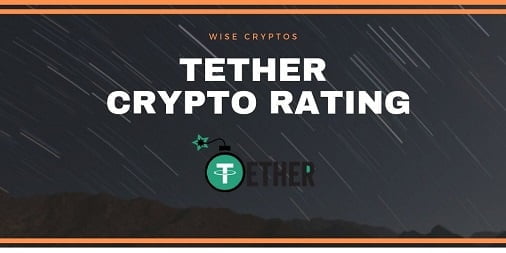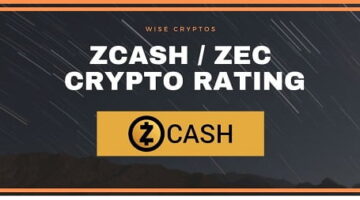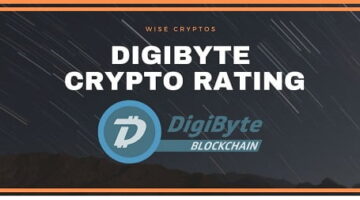Tether USDT Crypto Rating

Unlike most cryptocurrency ratings published online, the Wise Crypto ratings have nothing to do with the current or future price of the currency. Whether or not a crypto is over or undervalued or priced today is completely irrelevant. Our research focuses on the sustainability of each project, the security, the use case, decentralisation, environmental impact, the technology, the scalability and the developers and teams behind the projects.
Top Crypto Casinos List:
See all crypto casinos
Tether Rating = -39/1,000
Technology (0 to 300) = 11
- Speed (0 to 50) = 1
Tether is a stablecoin operating on the Omni Layer, and every Omni transaction shares the same transaction hash as Bitcoin. That means the time it takes to confirm a USDT transaction depends on the bitcoin transaction, which, as we all know it, is one of the slowest in the crypto market.
- Cost (0 to 50) = 0
Tether charges zero transaction fees for deposit and withdrawal between peer wallets. However, for Tether to fiat transactions, fees are calculated based on the sum of completed transactions over the previous 30 days. Tether chargers 0.1% for fiat deposits on any amount and 1% for fiat withdrawals ranging 1,000,000 USD to 10,000,000 USD and 3% for 10,000,000 USD and above. Point in case, although Tether to Tether transfer fees is free, you have to pay transaction fees when making fiat withdrawals and deposits. The percentage rates for these transactions are no different to what most banks charge.
- Scalability (0 to 50) = 5
Since Tether shares the same Omni layer as Bitcoin’s transaction hash, it would mean that Tether scales the same way as bitcoin, which has struggled with scalability issues for a very long time.
- Reliability (0 to 50) = 0
Initially, Tether had claimed that it was planning to keep all US dollars in reserve to meet customer withdrawals fast. Unfortunately, the platform could not meet all withdrawals requested in 2017. Also, Tether professes to have transparent reserve account holdings audited by an external company. In spite of the fact that there are no such audits, Tether’s misleading publicity became clear in January 2018 when they announced that they had parted ways with their auditor.
- Environmental Impact (0 to 50) = 5
Unlike other popular cryptocurrencies such as Bitcoin, Ethereum, Litecoin, etc. that require a lot of energy to mine, Tether can’t be mined. That means Tether spur little impact on the environment. However due to the intrinsic link between Tether and Bitcoin we have to take Bitcoins carbon footprint into account.
- Decentralisation (0 to 50) = 0
Since Tether is a stable coin backed to the dollar, the company issuing Tether is supposed to hold US dollar reserves equating to all the Tethers issued. This ideology is meant to allow Tether users to be able to sell USDT for $1 at any point in demand.
However, there have been doubts in the crypto space that the company issuing Tether doesn’t have sufficient currency in reserves to cater to all the Tethers circulating.
Tether community has been wary of platform’s transparency as they don’t know of its currency holding reserves and the amount held in each or if the reserves actually exist.
Security (-250 to 0) = -250
- Reorg, 51% & Brute Force Attack (-100 to 0) = -100
On Nov. 19, 2017, Tether announced that $30,950,010 USDT was transferred from its Treasury wallet to an unauthorized bitcoin address. In the announcement, which was then removed, Tether stated that they would not redeem any of the tokens stolen. However, they did say that they would try to recover and prevent the tokens from entering the broader crypto market.
Till to date, details of how the attack was cultivated are still unclear, but that all adds up to a stream of controversies that Tether has been a partner in crime with Bitfinex (which had also been hacked in August that year) to manipulate the market prices.
- Potential for Being Banned (-100 to 0) = -100
Despite the long chain of scrutiny surrounding the platform, Tether has been notably one of the standout stablecoin in the crypto market. Probability for it to be banned is highly likely though as after the current reviewed guidelines by crypto watchdogs such as FATF, FCA, AML, etc., Tether will have to exhibit its credibility status on high notes if it were to stick around longer.
On 7th October 2019 it was announced that a major class action lawsuit has been filed against Tether and Bitfinex for gross market manipulation, money laundering and fraud.
- Network Vulnerabilities (-50 to 0) = -50
It is still unclear how the 2017 hack on Tether happened. But still, if we follow the rule of thumb, that incident showcased that the network had a security vulnerability. Another case of vulnerability was evinced by SlowMist, a Chinese blockchain cybersecurity company that found out that when a user sends a transaction to an unnamed crypto exchange without inserting correct field values on that transaction, they could be able to execute double-spending successfully.
The founder of Omni Layer, JR Willett, cleared out the matter stating that double-spend occurred due to a flaw from the exchange but not from Tether’s code.
Following this rationale, it is certain that Tether exhibits severe cases of network vulnerabilities, which, even if some are indirect, are still a high risk to its community.
Use Case (0 to 500) = 200
- Initial Main Use Case (0 to 100) = 0
The original aim for Tether was to serve as proxy crypto for USD, which could be traded between exchanges. Since its inception, Tether has thus far fulfilled this end of the bargain. However due to the failure to provide any audits and the legal troubles the coin has been undergoing since its inception, it appears that the sole function of Tether was to artificially boost the price of Bitcoin and manipulate the crypto market in favour of Bitcoin through a highly complex system of manipulation and bots.
Stable coins in their current form serve no legitimate purpose in the cryptocurrency market. Licensed and regulated fiat exchanges should be seen as the future.
- Mainnet Live (0 to 200) = 200
Formerly known as Realcoin, the first Tether tokens were issued in October 2014. However, after the 2017 hack incident, Tether announced that it would initiate a hard fork on its mainnet, which would release a new version of the Omni Core software client in a bid to blacklist the funds stolen.
- Additional Use Cases (0 to 100) = 0
Tether has only functioned as a faucet for traders to move digital assets across crypto exchanges without the need to withdraw fiat and then depositing to another exchange. That is simply its theoretical sole use case.
- Additional Working Products (0 to 100) = 0
Core Team, Partnerships & Developers (0 to 200) = 0
- Core Team & Developers (0 to 100) = 0
Founders of Tether are Brock Pierce and Craig Sellars, who were also the original founding members of Mastercoin (now known as Omni Foundation). Mastercoin is the protocol that became the infrastructure source of the Tether cryptocurrency.
The co-founders of Tether, being the pioneers of its protocol, means that the project is in good hands as they can make the necessary tweaks to keep it on track. For instance, during the period of the hack, the team executed a hard fork that would recover the stolen coins.
All positives are currently redundant however due to the widely suspected highly fraudulent nature of the business, claims that we hope Tether will be able to prove are unfounded.
- Partnerships (0 to 100) = 0
One of the long-time partners of Tether is Bitfinex, who is allegedly sharing the same management. Bitfinex was scrutinized for manipulating the market, and Tether’s name was also included in the mix. This turmoil of events had ricocheted until just recently when the two platforms were sued in court. That has undoubtedly tarnished Tether’s already poor reputation for many in the crypto public.
USDT-TRON is a token that should be treated independently. That’s because it’s on a different blockchain (Tron’s), which means its throughput speed, cost, and use case (allows interoperability with TRON-based protocols and DApps) is different from USDT that’s hosted on the OMNI layer.
There are a small number of Tether casinos and USDT casinos, see all of them here Crypto casinos.
Relevant news

Zcash Crypto Rating
Unlike most cryptocurrency ratings published online, the Wise Crypto ratings have nothing to do with…

Algorand Crypto Rating
Unlike most cryptocurrency ratings published online, the Wise Crypto ratings have nothing to do with…

Voyager (VGX, Ethos, BQX) Token Crypto Rating
Unlike most cryptocurrency ratings published online, the Wise Crypto ratings have nothing to do with…

OmiseGo Crypto Rating
Unlike most cryptocurrency ratings published online, the Wise Crypto ratings have nothing to do with…

MaidSafeCoin / SafeCoin Crypto Rating
Unlike most cryptocurrency ratings published online, the Wise Crypto ratings have nothing to do with…

DigiByte Crypto Rating
Unlike most cryptocurrency ratings published online, the Wise Crypto ratings have nothing to do with…
